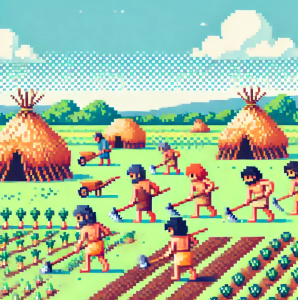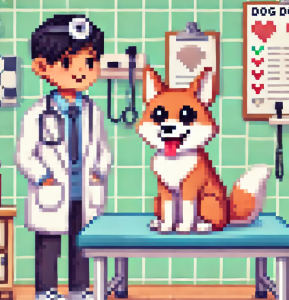
Understanding Pandemics: Past, Present, and Future
Have you ever wondered why diseases like COVID-19, the flu, or even the ancient plague have caused such widespread impact? These events aren’t just random; they follow patterns influenced by our interactions with the environment and animals. This blog will dive into the fascinating world of pandemics, explaining how they start, spread, and what we can do to prevent them in the future. W
The Evolution of Pandemics
From ancient times to the present day, pandemics have shaped human history. Let’s begin with a basic understanding of the terms:
- Endemic: A disease regularly found among particular people or in a certain area.
- Outbreak: A sudden increase in the number of cases of a disease.
- Epidemic: A widespread occurrence of an infectious disease in a community at a particular time.
- Pandemic: An epidemic that has spread across countries or continents.
Infectious diseases often start as zoonotic pathogens, meaning they originate in animals before jumping to humans. The transition from hunter-gatherer societies to agricultural communities increased human-animal interactions, leading to more frequent zoonotic transmissions.
How Diseases Spread
When we look at diseases like the plague, cholera, and COVID-19, a common thread is human activity. For instance:
- Trade and Travel: Expanded trade routes and global travel have historically facilitated the spread of diseases. The plague spread along trade routes from Asia to Europe, while cholera followed shipping routes.
- Urbanization: Growing cities create environments where pathogens can easily spread due to dense populations and close human contact.
- Climate Change: Changes in climate can expand the habitats of disease-carrying animals and insects, increasing the risk of outbreaks.
Case Study: COVID-19
COVID-19, caused by the SARS-CoV-2 virus, is a prime example of a zoonotic disease. It likely originated in bats and was transmitted to humans through an intermediary host, possibly pangolins. The rapid global spread of COVID-19 was facilitated by modern air travel and dense urban centers.
Public health measures such as isolation, quarantine, and border controls have been critical in managing the spread of COVID-19, echoing strategies used in past pandemics.
Why Surveillance is Key
Early detection of infectious diseases is crucial. Global surveillance programs monitor water-borne pathogens, vector-borne diseases, and zoonotic spillovers. These programs are vital for identifying emerging threats and implementing timely interventions. For instance, monitoring mosquito populations can help predict outbreaks of diseases like dengue and Zika.
The Role of Technology in Pandemic Response
Advances in technology play a significant role in pandemic preparedness and response:
- Rapid Diagnostic Testing: Quick identification of pathogens helps in early containment.
- Contact Tracing: Tracking and isolating individuals who have been in contact with infected persons reduces the spread.
- Drug Repurposing: Using existing drugs to treat new diseases can speed up the response.
- Vaccine Development: New platforms for vaccine development allow for quicker production and distribution.
Learning from History
Understanding past pandemics helps us prepare for future ones. The Black Death in the 14th century killed millions but also led to improved public health measures and medical advancements. Similarly, the cholera pandemics of the 19th and 20th centuries highlighted the importance of clean water and sanitation.
Taking Action Today
We can all play a part in preventing pandemics by:
- Supporting surveillance programs. LONG LIVE EPI!
- Advocating for sustainable land use and urban planning to minimize human-animal conflict.
- Promoting public health measures such as vaccination, hygiene, and safe food practices.
Let us know in the comments!
- How do you think climate change will affect the spread of infectious diseases in the future?
- What steps can individuals take to support public health initiatives in their communities?
Conclusion
Pandemics have always been a part of human history, and while they pose significant challenges, advancements in science and technology give us the tools to better understand, prevent, and control these outbreaks. By learning from the past and leveraging modern innovations, we can mitigate the impact of future pandemics and protect global health.
Explore and Learn with Science
Dive into groundbreaking research and inspiring stories with ‘This Week in Science’! Perfect for teachers and science enthusiasts, our free weekly newsletter expands your horizons in teaching and learning. Join us today and reshape your engagement with science. If you liked this blog, please share it! Your referrals help This Week in Science reach new readers.



